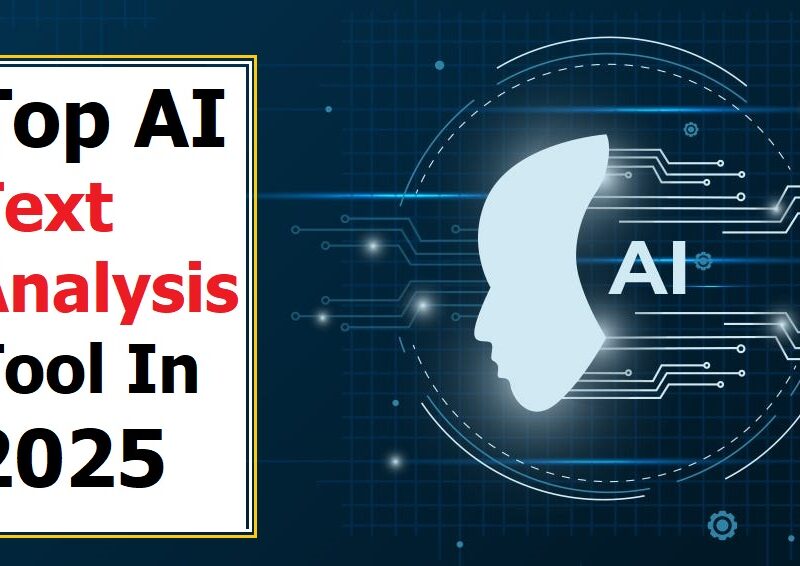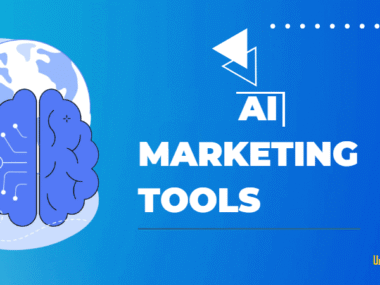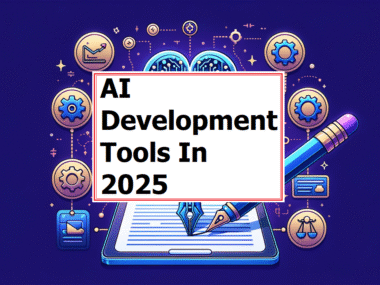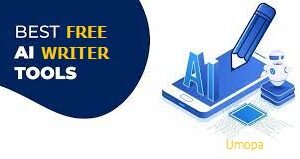In the modern world, businesses and individuals are generating vast amounts of textual data every day, from social media posts and customer feedback to research papers and emails. This textual data holds a wealth of information, but extracting meaningful insights from it can be a time-consuming and challenging task. This is where AI text analysis tools come into play.
AI text analysis tools use machine learning (ML) and natural language processing (NLP) algorithms to process, analyze, and derive actionable insights from large volumes of text. These tools enable users to quickly assess sentiment, detect patterns, extract key information, and make data-driven decisions.
In this article, we’ll explore the top AI text analysis tools, how they work, and how businesses and individuals can leverage them to unlock the potential of textual data.
Table of Contents
- What is AI Text Analysis?
- Why Use AI Text Analysis Tools?
- How Do AI Text Analysis Tools Work?
- Top AI Text Analysis Tools
- Google Cloud Natural Language API
- IBM Watson Natural Language Understanding
- MonkeyLearn
- TextRazor
- Lexalytics
- Aylien
- Microsoft Text Analytics API
- Semantria
- MeaningCloud
- RapidMiner
- Applications of AI Text Analysis Tools
- How AI Text Analysis is Impacting Industries
- Conclusion
What is AI Text Analysis?
AI text analysis refers to the use of artificial intelligence techniques, such as machine learning and natural language processing (NLP), to process and analyze textual data. It involves extracting relevant information, detecting sentiment, categorizing content, and even generating insights from raw text.
AI text analysis tools are designed to help users unlock meaningful patterns and trends in large datasets, which would be impossible or highly time-consuming for humans to analyze manually.
Text analysis is used in various fields, such as market research, customer service, and content creation, to derive insights from vast amounts of data that can help businesses make informed decisions.
Why Use AI Text Analysis Tools?
AI text analysis tools are crucial in today’s data-driven world. Here are some reasons why businesses, researchers, and content creators use these tools:
1. Time and Resource Efficiency
- AI tools can process and analyze large datasets in minutes, saving considerable time compared to manual analysis.
2. Improved Accuracy
- AI text analysis tools can identify patterns and trends in text that are often invisible to the human eye, improving decision-making and reducing human error.
3. Sentiment Analysis
- These tools allow businesses to assess customer sentiment, enabling them to tailor their marketing strategies, improve products, and enhance customer service.
4. Data-Driven Insights
- AI text analysis can extract actionable insights from customer reviews, social media posts, surveys, and other forms of textual feedback.
5. Scalability
- AI tools can handle and analyze large volumes of data, which is especially valuable for companies with large customer bases or big data sets.
6. Cost-Effective
- By automating the process of text analysis, AI tools can help companies reduce operational costs and optimize workflows.
How Do AI Text Analysis Tools Work?
AI text analysis tools rely on a combination of machine learning and natural language processing (NLP) techniques. Here’s a basic breakdown of how these tools typically work:
1. Text Preprocessing
- The raw text is cleaned and preprocessed to remove any irrelevant data or noise, such as special characters, stop words, and punctuation. This step ensures that the analysis is focused on the core content.
2. Tokenization
- Tokenization is the process of breaking down the text into smaller pieces, such as words, phrases, or sentences, called tokens. These tokens are analyzed individually or in groups to extract meaning.
3. Part-of-Speech Tagging
- Part-of-speech tagging identifies the grammatical components of the text, such as nouns, verbs, adjectives, etc. This helps the AI understand the structure of the language.
4. Named Entity Recognition (NER)
- NER identifies and classifies entities within the text, such as people, organizations, dates, locations, and more. This helps extract key information from the content.
5. Sentiment Analysis
- Sentiment analysis uses algorithms to detect the sentiment behind the text—whether it’s positive, negative, or neutral. This is particularly useful for businesses analyzing customer feedback or social media sentiment.
6. Topic Modeling and Categorization
- AI tools can automatically categorize text into predefined topics or create clusters of similar themes. This is valuable for businesses looking to segment data or analyze trends.
Top AI Text Analysis Tools
Here’s a list of the top 10 AI text analysis tools that can help businesses and individuals harness the power of text data:
1. Google Cloud Natural Language API
Google’s Natural Language API offers powerful tools for analyzing and understanding text. It supports a range of features, including sentiment analysis, entity recognition, syntax analysis, and content classification.
Key Features:
- Sentiment analysis
- Entity recognition and classification
- Syntax analysis
- Integration with Google Cloud products
Why Use It:
- Google Cloud Natural Language API is highly scalable, accurate, and integrates well with other Google Cloud services.
2. IBM Watson Natural Language Understanding
IBM’s Watson Natural Language Understanding provides advanced text analysis tools powered by NLP. It helps businesses gain insights from unstructured data, such as customer feedback, social media posts, and documents.
Key Features:
- Sentiment analysis and emotion detection
- Entity extraction and categorization
- Concept and keyword extraction
- Language translation
Why Use It:
- IBM Watson’s powerful NLP capabilities make it a top choice for businesses seeking deep insights from their text data.
3. MonkeyLearn
MonkeyLearn is an AI text analysis platform that allows users to create custom text classifiers and extract information from text data. It provides machine learning-based tools for sentiment analysis, keyword extraction, and more.
Key Features:
- Customizable text classifiers
- Sentiment analysis and categorization
- Visual data exploration
- Integrations with other tools
Why Use It:
- MonkeyLearn is known for its user-friendly interface, making it accessible to both beginners and advanced users.
4. TextRazor
TextRazor is an AI text analysis tool designed to extract meaningful insights from text. It supports features such as entity extraction, sentiment analysis, and relationship identification, making it ideal for businesses looking to analyze large volumes of text.
Key Features:
- Entity extraction and classification
- Sentiment analysis and opinion mining
- Customizable text analysis models
- Real-time text processing
Why Use It:
- TextRazor offers robust, real-time text processing and highly accurate entity extraction, making it suitable for large-scale analysis.
5. Lexalytics
Lexalytics provides a range of text analysis and NLP tools that help businesses analyze customer sentiment, improve marketing strategies, and gain insights from text data. It supports several languages and can be customized to suit specific business needs.
Key Features:
- Sentiment analysis and opinion mining
- Entity extraction and theme detection
- Text classification and summarization
- Multi-language support
Why Use It:
- Lexalytics offers powerful features for businesses looking to extract insights from vast amounts of text data quickly.
6. Aylien
Aylien is a text analysis and natural language processing platform that helps businesses analyze news, social media, and other textual data sources. It offers powerful tools for sentiment analysis, entity recognition, and text classification.
Key Features:
- News and social media analysis
- Sentiment and emotion analysis
- Entity recognition and categorization
- Text classification
Why Use It:
- Aylien is an excellent choice for businesses needing to track trends and analyze news articles and social media content in real time.
7. Microsoft Text Analytics API
The Microsoft Text Analytics API is part of the Azure AI platform. It provides powerful text analysis capabilities, including sentiment analysis, entity recognition, and key phrase extraction. The API is designed to integrate seamlessly with other Azure products.
Key Features:
- Sentiment analysis and opinion mining
- Entity recognition and key phrase extraction
- Language detection
- Customizable models
Why Use It:
- The Microsoft Text Analytics API integrates easily with Azure’s cloud ecosystem, making it a top choice for businesses using Microsoft products.
8. Semantria
Semantria is an AI-powered text analysis tool that provides sentiment analysis, entity recognition, and theme detection. It’s designed for businesses that need to analyze customer feedback, social media, and other text data sources.
Key Features:
- Sentiment and emotion analysis
- Entity and theme extraction
- Text classification and tagging
- Integration with business intelligence tools
Why Use It:
- Semantria is ideal for businesses looking to gain actionable insights from customer feedback and other textual data sources.
9. MeaningCloud
MeaningCloud offers a wide range of NLP and text analytics services, including sentiment analysis, topic classification, and entity recognition. It also supports social media and customer feedback analysis.
Key Features:
- Text classification and categorization
- Sentiment analysis and emotion detection
- Entity recognition and relationship extraction
- Multilingual support
Why Use It:
- MeaningCloud is an excellent choice for businesses that need to analyze large volumes of social media data and customer feedback.
10. RapidMiner
RapidMiner is a data science platform that provides AI and machine learning tools for text analysis. It supports sentiment analysis, topic modeling, and text classification, helping businesses derive insights from text data.
Key Features:
- Machine learning and text mining
- Sentiment analysis and categorization
- Text classification and clustering
- Visual data exploration
Why Use It:
- RapidMiner is a powerful, all-in-one platform for businesses looking to integrate text analysis with broader data science workflows.
Applications of AI Text Analysis Tools
AI text analysis tools are used across various industries to extract insights from text data. Some common applications include:
- Customer Feedback Analysis: Analyzing reviews, surveys, and social media posts to understand customer sentiment and improve products or services.
- Market Research: Extracting trends and insights from news articles, blogs, and other textual data sources.
- Content Categorization: Automatically categorizing large volumes of text for better organization and easier retrieval.
- Social Media Monitoring: Analyzing social media content to track brand sentiment and engage with customers.
How AI Text Analysis is Impacting Industries
AI text analysis is transforming industries by enabling faster, more accurate insights from textual data. Some of the key impacts include:
- Improved Decision-Making: Businesses can make data-driven decisions faster by analyzing text data in real time.
- Better Customer Insights: Sentiment analysis tools help companies understand customer preferences and pain points, allowing for more personalized experiences.
- Enhanced Productivity: Automation of text analysis tasks saves time and resources, allowing businesses to focus on high-level decision-making.
Conclusion
AI text analysis tools have become indispensable for businesses and individuals looking to unlock the potential of textual data.
Whether you’re analyzing customer feedback, monitoring social media, or gaining insights from news articles, these top 10 AI text analysis tools can help you process and understand large volumes of data quickly and accurately.
As AI continues to evolve, the possibilities for text analysis are endless, offering new opportunities for businesses to make smarter, data-driven decisions.










